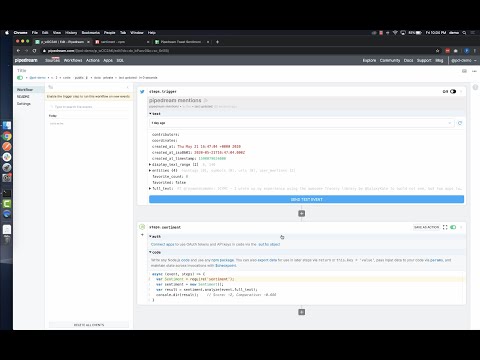What do you want to automate
with BART and Google Sheets?
Prompt, edit and deploy AI agents that connect to BART, Google Sheets and 3,000+ other apps in seconds.
Trusted by 1,000,000+ developers from startups to Fortune 500 companies
Popular BART and Google Sheets Triggers#
Emit new event each time a comment is added to a spreadsheet.
Emit new event each time a row or rows are added to the bottom of a spreadsheet.
Emit new event each time a row or rows are added to the bottom of a spreadsheet.
Emit new event each time a row or cell is updated in a spreadsheet.
Popular BART and Google Sheets Actions#
Add a single row of data to Google Sheets. See the documentation
Add multiple rows of data to a Google Sheet. See the documentation
Get all values or values from a range of cells using A1 notation. See the documentation
Create conditional formatting with color scales or custom formulas. See the documentation
Add edit protection to cell range with permissions. See the documentation
Overview of BART#
The BART API provides real-time data about the Bay Area Rapid Transit system, including schedules, advisories, and station information. Using Pipedream, developers can craft serverless workflows that react to BART data and integrate with countless apps to automate transit-related tasks, enrich apps with transit data, and enhance user experiences with up-to-the-minute BART information.
Connect BART#
import { axios } from "@pipedream/platform"
export default defineComponent({
props: {
bart: {
type: "app",
app: "bart",
}
},
async run({steps, $}) {
return await axios($, {
url: `https://api.bart.gov/api/version.aspx?key=${this.bart.$auth.api_key}&json=y`,
})
},
})
Overview of Google Sheets#
The Google Sheets API allows for the creation, reading, updating, and deletion of data within Google Sheets, enabling a robust platform for spreadsheet management and data manipulation. Through Pipedream, you can craft serverless workflows that respond to various triggers, such as webhook events, emails, or scheduled times, to interact with Google Sheets. This synergy can automate reporting, synchronize data across applications, manage inventory, track leads in a CRM, or even conduct survey analysis by updating and retrieving sheet data on the fly.
Connect Google Sheets#
import { axios } from "@pipedream/platform"
export default defineComponent({
props: {
google_sheets: {
type: "app",
app: "google_sheets",
}
},
async run({steps, $}) {
return await axios($, {
url: `https://www.googleapis.com/oauth2/v1/userinfo`,
headers: {
Authorization: `Bearer ${this.google_sheets.$auth.oauth_access_token}`,
},
})
},
})
Related Videos#



Community Posts#


